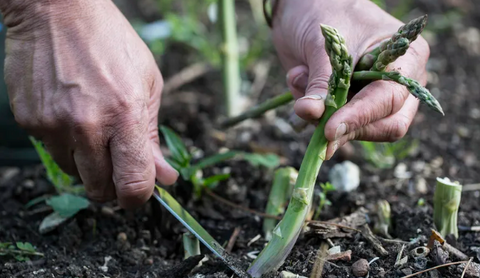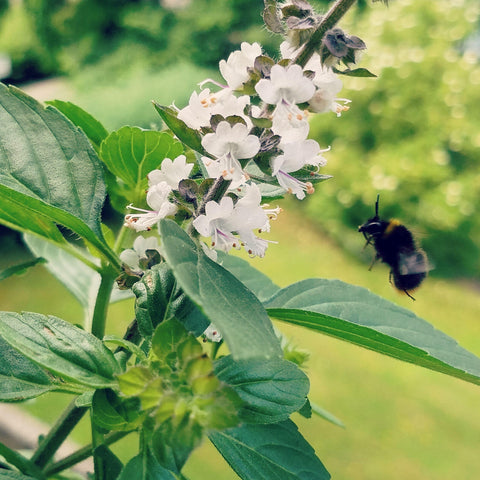Keeping indoor plants healthy isn’t just about giving them sunlight and water. It’s about creating an environment where they can thrive without the lurking threats of disease. Inside your home, plants are more vulnerable to specific conditions that can wreak havoc if left unchecked. The good news? With a sharp eye and a little know-how, you can catch these problems before they spiral out of control.

How to Spot Trouble Before It’s Too Late
Most plant diseases start quietly, giving off subtle signals that something is wrong. By the time your plant looks visibly sick, the disease may have taken hold. Learning to spot these early warning signs can make all the difference.
Understanding Indoor Plant Diseases
What Causes Indoor Plant Diseases?
Indoor plant diseases are primarily caused by pathogens—fungi, bacteria, and viruses—that thrive in the controlled conditions of our homes. These organisms are opportunistic, waiting for the right conditions to strike. Weak plants, inconsistent care, or the wrong environment provide an easy target.
Fungal, Bacterial, and Viral Infections Explained
Fungal infections are the most common among indoor plants, manifesting as spots, mold, or powder on leaves and stems. Bacterial infections spread quickly through water or contaminated tools, causing dark patches and mushy textures. Viral infections are sneakier, often showing up as strange leaf patterns or stunted growth.
How Poor Air Circulation and Overwatering Create a Breeding Ground for Disease
Stagnant air and wet soil are perfect breeding grounds for disease. When air can’t move freely around a plant, moisture lingers, inviting fungal spores and bacteria to multiply. Overwatering suffocates roots and encourages diseases like root rot to take hold, often unseen until it's too late.
Identifying Symptoms Early: The Key to Healthy Plants
Common Warning Signs That Your Plant Is in Trouble
Yellowing leaves, wilting, and unusual spots are all cries for help. If your plant isn’t looking its best, it’s trying to tell you something. Catching these signs early can mean the difference between a quick recovery and irreversible damage.
Why Leaves Tell All: Discoloration, Spots, and More
Leaves are a plant's communication channel. Discoloration—whether it's yellowing, browning, or spotting—can indicate everything from nutrient deficiencies to infections. Learn to read these changes like a pro, and you’ll be able to diagnose problems with confidence.
Root Rot: The Invisible Killer Lurking Beneath the Soil
Root rot is particularly sinister because it starts underground, where you can’t see it. By the time the symptoms—such as wilting and yellowing—show up above ground, the roots are often already in bad shape. Regularly inspecting your plant's root system can help you catch this hidden enemy.
Fungal Diseases: The Most Common Culprits
Powdery Mildew: The White Dust You Can’t Ignore
Powdery mildew like flour powdered on your plant. It coats the leaves and stems, blocking photosynthesis and weakening the plant. Although it’s easy to wipe off, this fungus spreads quickly if not treated.
Downy Mildew: Similar Look, Bigger Problem
Often confused with powdery mildew, downy mildew is more destructive. It appears as yellow or white patches on the upper surface of leaves, with a downy growth underneath. Left unchecked, it can cause leaf drop and weaken your plant significantly.
Botrytis Blight: When Your Plant Looks Like It’s Wearing Gray Mold
Botrytis, or gray mold, loves damp conditions. It creates fuzzy, gray patches on leaves, stems, and flowers. Once it gets a foothold, it spreads fast, turning healthy plant parts mushy and discolored.
Anthracnose: The Silent Leaf Destroyer
Anthracnose quietly eats away at leaves, leaving behind sunken spots and dark edges. Over time, the affected areas dry out, causing leaves to shrivel and fall prematurely.
Rust: How to Spot Those Tiny, Orange Fungal Pustules
Rust disease creates tiny orange or reddish pustules on the underside of leaves. These fungal spores can spread easily, creating a rusty appearance and severely affecting plant health if not addressed promptly.

Bacterial Diseases and Their Symptoms
Bacterial Leaf Spot: Why Your Leaves Are Covered in Dark Patches
Bacterial leaf spot causes dark, water-soaked patches on leaves. These spots can spread quickly, causing leaves to yellow, curl, and drop. This disease thrives in warm, humid conditions, especially when water is left sitting on foliage.
Bacterial Blight: How It Can Spread Like Wildfire
Blight is one of the fastest-spreading bacterial infections. It starts as small, dark lesions but quickly spreads across leaves and stems, causing wilting and death. This disease can decimate entire plants in days if not treated immediately.
Crown Gall: The Bumpy Growths That Can’t Be Ignored
Crown gall causes strange, tumor-like growths at the base of stems or roots. These galls disrupt the flow of nutrients, slowly strangling the plant from the inside out.
Viral Diseases and What They Look Like
Mosaic Virus: The Patchy, Mottled Pattern on Leaves
The mosaic virus creates a patchwork of light and dark green areas on leaves, making them look like they’ve been painted. While it rarely kills plants outright, it weakens them significantly and can stunt growth.
Tomato Spotted Wilt Virus: When Leaves Start Wilting and Dying Mysteriously
This virus causes wilting, yellow rings, and brown spots on leaves, which can confuse even experienced gardeners. Though it often starts with just a few leaves, it quickly spreads, causing severe plant decline.
Cucumber Mosaic Virus: Why It’s Not Just a Garden Issue
The Cucumber mosaic virus affects more than just cucumbers. It can infect houseplants, too, causing leaves to curl, yellow, and develop irregular patterns. This virus spreads easily through contaminated tools and insect vectors.
Root Rot: The Stealthy Destroyer
Why Overwatering Leads to Root Rot
Overwatering is a plant's worst enemy. It deprives roots of the oxygen they need, creating soggy conditions where fungal pathogens thrive. Once root rot sets in, it’s hard to reverse.
Recognizing the Signs of Rot Before It’s Too Late
Early signs of root rot include wilting, yellowing leaves, and a foul odor coming from the soil. If you suspect root rot, inspect the roots—if they’re black or mushy, the plant is already in trouble.
Best Practices for Preventing Root Rot in Your Indoor Plants
The key to preventing root rot is proper watering. Let the soil dry out between waterings, ensure your pots have drainage holes, and avoid leaving plants in standing water.

Mold and Mildew: What’s Growing on Your Plant?
White Mold: The Fuzzy Invader on Stems and Soil
White mold looks like cottony fuzz on stems, soil, and leaves. It can swiftly spread to other plants and does well in humid settings. Regular cleaning and better airflow are your best defenses.
Sooty Mold: Why Your Plant Looks Covered in Black Dust
Sooty mold isn’t a disease itself but rather a byproduct of pest infestations like aphids or scale. It looks like black dust on leaves and stems, and while it doesn’t directly harm plants, it blocks sunlight and inhibits photosynthesis.
How to Keep Your Houseplants Safe From Mold Infestation
Keep humidity levels in check, avoid overwatering, and ensure good airflow. Regularly wipe down leaves and remove any dead plant material that could harbor mold spores.
Leaf Spotting: When Black, Brown, or Yellow Spots Appear
What Causes Leaf Spotting?
Leaf spots are typically caused by fungal or bacterial infections, often exacerbated by wet foliage. The spots can be black, brown, yellow, or reddish, depending on the pathogen involved.
The Difference Between Fungal and Bacterial Leaf Spots
Fungal spots are usually circular with well-defined edges, while bacterial spots may appear irregular and water-soaked. Knowing the difference can help you choose the right treatment—whether it’s fungicide or bacterial sprays.
How to Stop Leaf Spots from Spreading
To stop leaf spots from spreading, remove affected leaves immediately. Improve airflow, avoid watering overhead, and use a fungicide or antibacterial spray to control the infection.
Wilting and Drooping: Is It Disease or Just Thirst?
When Wilting Means More Than Just Lack of Water
While underwatering is a common cause of wilting, the disease could also be at play. Bacterial wilt, fungal infections, and root rot can all cause plants to droop, even when their water needs are met.
Diseases That Cause Drooping Despite Proper Care
If your plant continues to droop despite proper watering, diseases like blight or vascular wilts could be the culprit. These diseases block water movement within the plant, causing wilting even in moist soil.
How to Revive a Wilting Plant Before It’s Too Late
To revive a wilting plant, first assess the roots. If rot is present, trim off affected roots and repot the plant in fresh soil. Ensure proper watering habits and improve airflow to prevent future issues.

Yellowing Leaves: A Symptom of Multiple Issues
Diseases That Cause Yellowing (and How to Diagnose)
Yellowing leaves can be caused by root rot, fungal infections, or bacterial diseases. To diagnose, check for other symptoms like wilting, spotting, or discolored roots.
Differentiating Between Nutrient Deficiencies and Disease
Nutrient deficiencies also cause yellow leaves but often appear in distinct patterns (such as yellowing between leaf veins). If your plant shows yellowing without other disease symptoms, consider adjusting your fertilization routine.
Yellow Leaves: When It's Just a Sign of Stress, Not Sickness
Sometimes, yellowing leaves are just a sign of stress—like a change in environment, overexposure to light, or temperature shifts. Give your plant time to adjust before assuming it’s diseased.
Black or Brown Roots: A Clear Sign of Trouble
How to Check for Diseased Roots
Healthy roots should be white or light tan. If you notice black, brown, or mushy roots, disease has likely set in. Gently remove the plant from its pot to inspect the root system thoroughly.
Why Black Roots Signal Disease, Not Just Overwatering
Black roots indicate advanced root rot or fungal infection. These roots are no longer able to absorb nutrients or water, and if not removed, they’ll continue to spread decay throughout the plant.
What to Do When You See Brown Roots in Your Plant
If you find brown roots, trim away the affected parts and repot your plant in fresh, well-draining soil. Adjust your watering schedule to prevent further rot and consider using a fungicide.
Prevention: The Best Cure for Indoor Plant Diseases
How to Prevent Disease with Proper Watering Techniques
Watering is a science. Overwatering is the number one cause of indoor plant disease, so it’s crucial to water only when necessary. Always let the top inch of soil dry out before watering again, and make sure your pots have drainage holes.
Airflow Matters: How to Improve Ventilation for Healthier Plants
Plants need fresh air to thrive. Good airflow reduces humidity around your plants and keeps fungal spores from settling. Place plants in well-ventilated areas and avoid crowding them together.
Sterilizing Your Pots and Tools: A Simple Step to Stop Disease Spread
Before reusing pots or tools, always sterilize them to kill any lingering pathogens. A simple soak in a bleach solution can prevent disease from spreading between plants.
Staying ahead of plant diseases means being proactive, observant, and diligent in care. Don’t wait until your plants are on the brink of collapse—catch problems early and take steps to prevent disease before it starts. By maintaining proper watering habits, improving airflow, and quarantining sick plants, you can keep your indoor garden lush, vibrant, and disease-free for years to come.









